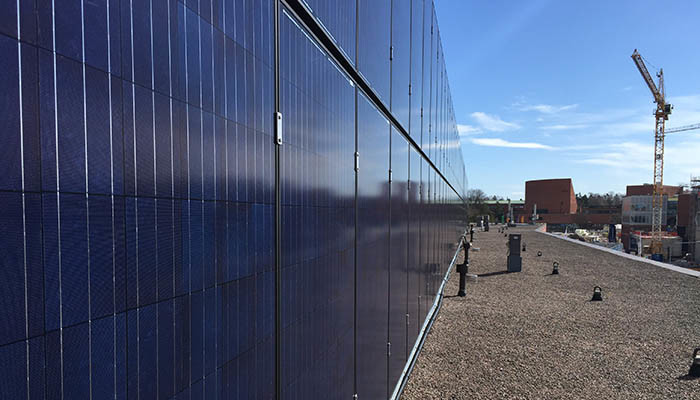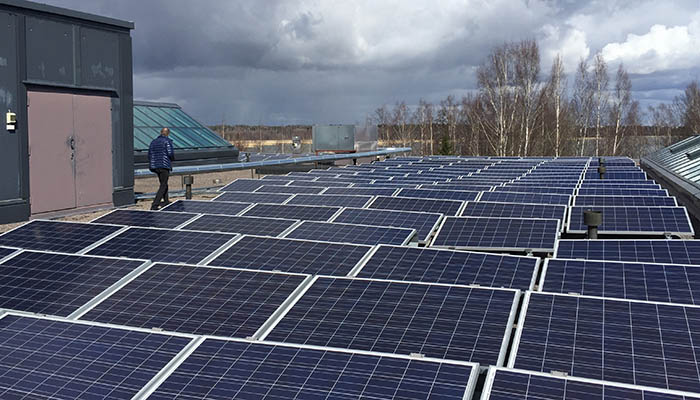Solar energy to Otaniemi – campus planning invests in energy efficiency
Sustainable development has an important role in the development of the Otaniemi campus.

Right now, the Aalto University main campus is growing and developing rapidly. Campus planning is investing in energy efficiency, which is an important step in the goal towards an energy self-sufficient Otaniemi ‘According to our report, ground heat and solar energy are the most suitable options for Otaniemi, and we are gradually increasing their use’, tells Satu Kankaala, Head of Workplaces and Sustainability at Aalto CRE. ‘The campus is made unique by several culturally significant locations as well as the nearby nature and conservation area. They also impact what kinds of energy technologies can be used in the properties’, she continues.
According to Kankaala, also financial sustainability, the wellbeing of people working in the spaces, and improving the utilisation of the spaces are central aspects of responsible campus development.

There are a total of 920 solar panels on the roofs of the TUAS and T buildings.
At the moment, solar energy is being used in six buildings in Otaniemi. All in all, there are 920 solar panels on the roofs of the TUAS building at Maarintie 8 and the T building at Konemiehentie 2, making up 340 m². They cover about 6% of the buildings’ electricity consumption, or up to 20% in the summertime. In optimal conditions, electricity production comes up to around 1 kWh per panel square.
Geothermal energy will comprise about 90% of the heating and up to 95% of the cooling of Väre.
About 45% of the energy used for heating and 75% of the energy used for cooling the recently repaired Dipoli comes from geothermal energy. Geothermal energy will comprise about 90% of the heating and up to 95% of the cooling of Väre, which will be finished next year. The electricity consumption of campus buildings has considerably been reduced by measures such as shifting to LED lighting and improving the power management of the computer base. With these energy efficiency measures, the carbon footprint of the buildings has been significantly reduced.
Campus energy efficiency development is a collaboration of the Sustainability team coordinated by Aalto CRE. In addition, there is a Responsibility and sustainable development working group where the theme is explored more extensively, especially from the viewpoint of university services.
More information:
Campus energy efficiency (Aalto CRE)
Responsibility at Aalto University
Figures of sustainable development and report 2016
Satu Kankaala
Head of Workplaces and Sustainability
Aalto CRE
satu.kankaala@aalto.fi
tel +358400 535 919

